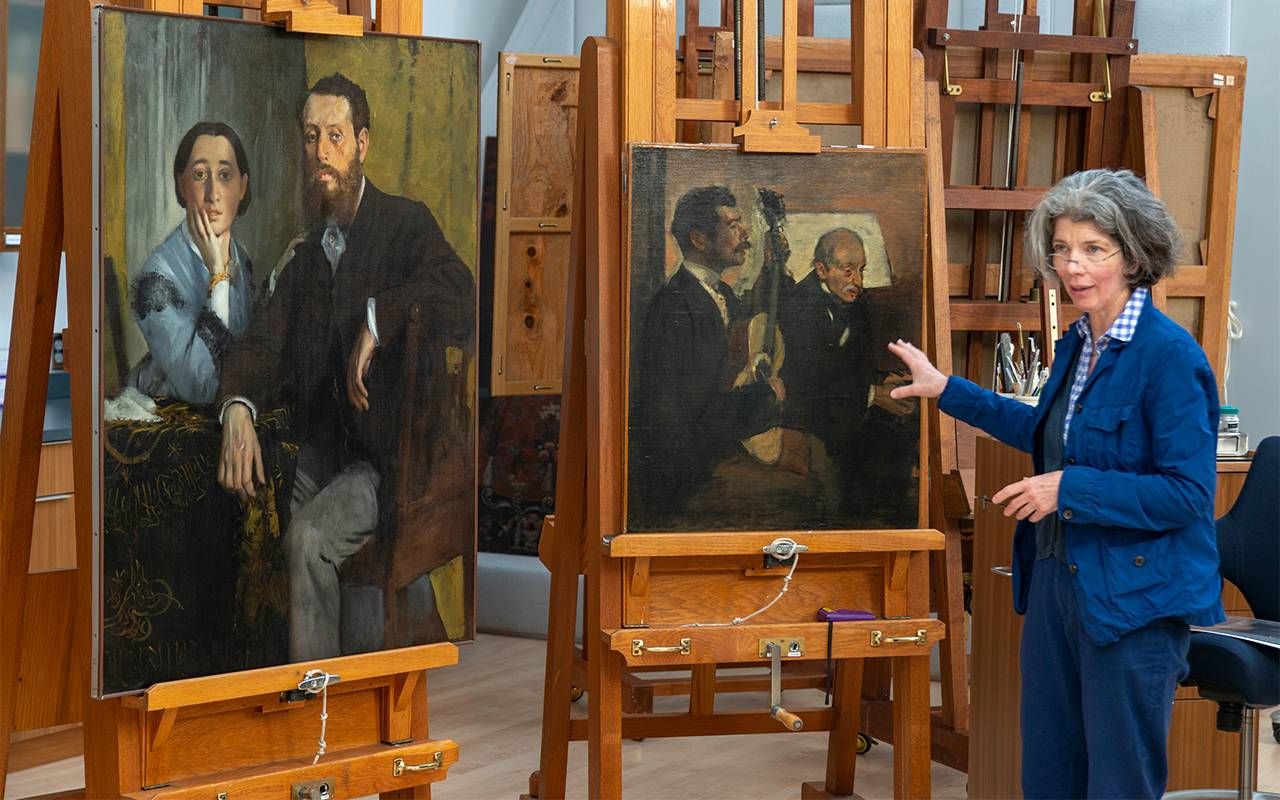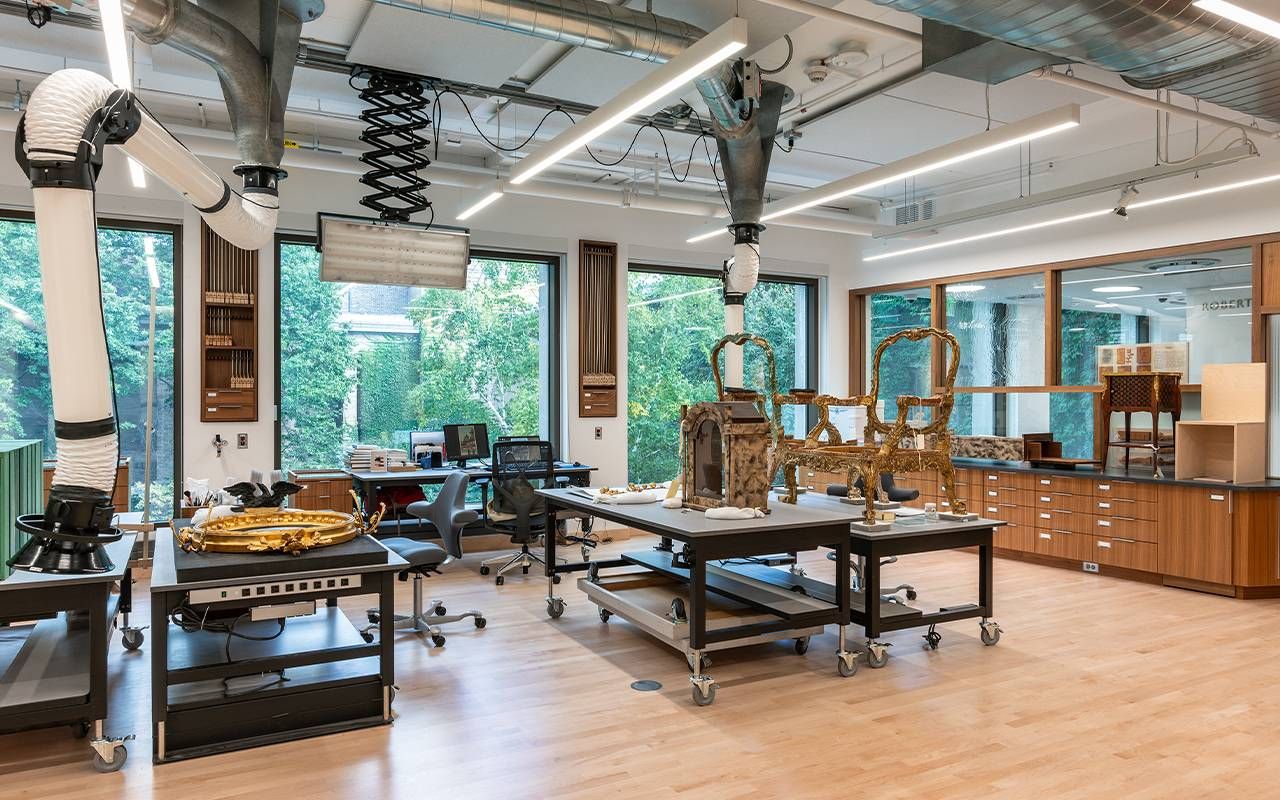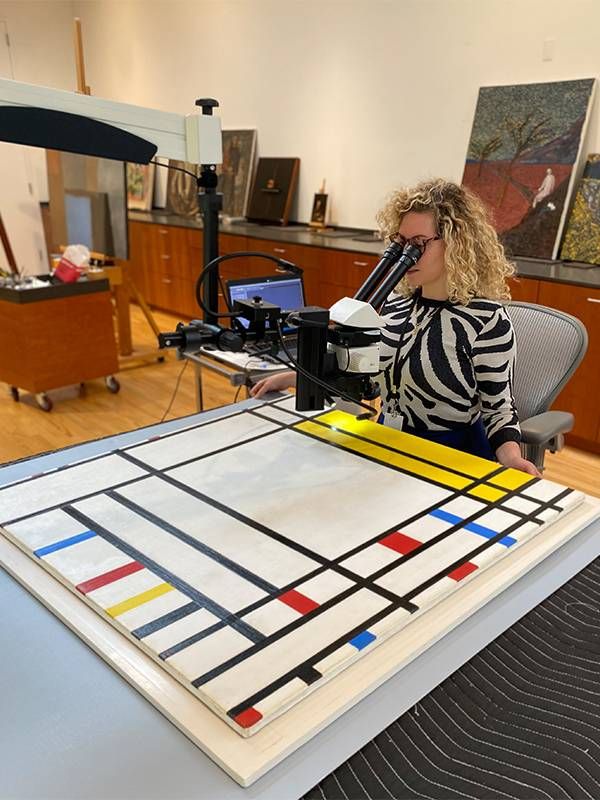Some Museums Now Reveal the Art and Science of Conservation Projects
Three conservators share the challenges — and the joys — of their work
Color fades. Varnish cracks. Iron corrodes. Traditionally, art conservators have worked behind closed doors to repair paintings, furniture and other objects that are damaged or show signs of aging. That's changing. A few museums have installed glass walls, some of them retractable, in conservation labs so the public may observe the process and even engage with the experts. Among them are museums in Massachusetts, Texas and Washington, D.C.

The Museum of Fine Arts, Boston (MFA) opened its new, 22,000-square-foot Conservation Center in November. The Dallas Museum of Art established a conservation center in 2013, and in 2020 named it in honor of Inge-Lise Eckmann Lane, an independent conservator who contributed greatly to the growth of the museum's conservation program. The Lunder Conservation Center, established in 2006 at the Smithsonian American Art Museum in the nation's capital, focuses on creating public programming to raise awareness of the need for cultural heritage.
New Seminars, Slide Shows, Display Cases
Rhona MacBeth is the director of conservation and scientific research, the Eijk and Rose-Marie van Otterloo Conservator and Head of Paintings Conservation at MFA. Along with Yuqi Chock, the inaugural conservation fellow in community engagement, MacBeth was on hand in November to lead tours and greet visitors at the grand opening of the museum's Conservation Center, held over four days.
"What's very special about the job I have is the intimacy with the art."
"What's very special about the job I have is the intimacy with the art," said MacBeth. "That is a privilege, and now visitors who come to the new Conservation Center also can experience that." Learning about the work of conservators "changes the way you see art," she continued. "It resonates because art is made objects, made by people through history and now being cared for. That changes a person's relationship with art."
On the tours, visitors heard from conservators in several divisions speak about two Degas paintings, an articulated dragon from Japan with 293 joints, a Nubian loincloth and other objects. Some conservators talked about the scientific research involved in their work. Beginning in December, tours will be offered three times a month, "Close Looking" seminars will be scheduled soon and a dedicated learning space in the Center is open the same hours as the museum. There, visitors can see conservators at work and learn more about the process.
"Display screens have slide shows about ongoing projects, and materials will be displayed in cases, all updated as needed," Chock said. "None of this has ever been there for the public to see — and now it is." MacBeth noted that on her tours, many visitors said they had been unaware that art conservatorship was a potential career choice. MacBeth, whose original aspiration was to be a painter, said that traditionally the work has been "so invisible" that many in the field "stumbled into it."

Amber Kerr, head of conservation and senior paintings conservator at the Smithsonian American Art Museum, can vouch for that. While studying to be an art therapist for children, Kerr attended a conference held by the American Institute for Conservation after a professor suggested she look into art conservation. "There, I met people who spoke about the field with such reverence and such light in their eyes," she said. Kerr was hooked.
A Code of Ethics Demands 'Do No Harm'
After more than 20 years in the field, Kerr still gets a thrill when she sits in front of a work of art scheduled for conserving.
"I think 'Wow' — someone has faith in me to extend this work's life, to preserve it," she said. Then her attention shifts to pointed questions. "What did the artist do to create that or construct this? Next, I investigate and analyze what is causing the damage. For my treatment plan, I operate under a code of ethics to first do no harm. Then I identify the most effective way to move forward and restore the aesthetics with reversible materials that give the illusion of being like the original materials."
"I think 'Wow' — someone has faith in me to extend this work's life, to preserve it."
Kerr described her work as something of a balancing act. "We draw upon three disciplines — studio art, art history and science — and you must strengthen yourself in all three," she said. "When you look at a Winslow Homer painting to analyze what materials are present and what the various pigments are, that's the science leg. Art history factors in when you want to know what the painting looked like before it came to you for restoration, so you work with a curator. Studio art determines my ability to reconstruct a loss or damage to a work so that what you see is what Homer intended you to see."
To help visitors learn how to care for their own collections, the museum has offered preservation workshops. One was on how to take care of family quilts; how to house them and vacuum them, and when to take them to a conservator.
"We also held a workshop on frames, and we hope to offer one on photographs," Kerr said. "People want to know how to preserve and care for their own treasures, and for us it's another way to highlight the importance of conservation." (To find help for your collections, Kerr recommended Caring for Your Treasures, a resource from the American Institute for Conservation.)
Repairing a Torn Canvas, Assessing a Cracked Painting
One treasure, artist María Luisa Pacheco's "Stoic Figure" (1959), arrived over six decades ago at the Dallas Museum of Art with a large tear in the canvas. Through a "Conserving Canvas" grant from the Getty Foundation, the tear was repaired. "I used a specific technique that relates to mending, instead of patching," said Laura Hartman, paintings conservator. "We do a lot of that in our studio."

In November, Hartman traveled to Argentina to conduct a workshop for conservators on how to reweave threads in a torn canvas. "The technique originated with German conservator Winfried Heiber in the '90s, and I love it because it focuses on the canvas," Hartman said. "It's a treatment philosophy of minimal intervention, which I follow."
Piet Mondrian's "Place de la Concorde" (1938-43) isn't torn — it has a crack. "It happened before we got the painting in 1982, but we're not sure if it happened in Mondrian's lifetime," Hartman said. "This project requires a lot of concentration, and needs more study and research so we can try to recreate the stress pattern and then determine how far to take any treatment. It's all about reverse-engineering of the damage."
Hartman noted that her work can appear "tiny" to someone unfamiliar with the field, so she particularly enjoys speaking to the public.
"I explain we are not artists 'fixing' something," she said. "I say that we're historians and scientists, working very hard to go back in time to bring artists' techniques and contexts more to the surface, and that opens the door to discussions about artists' intentions and materials. I always love it when it starts to click with people, often in the question-and-answer period."
Hartman added, "Art conservation is holistic — and it's so fun."


